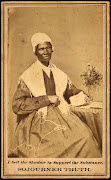Thursday, January 22, 2009
Chinese Literature
It's interesting that both "Journey to the West" (AKA "Monkey") and "The Dream of the Red Chamber" (AKA "The Story of the Stone") begin on mountaintops with stone imagery and religious connotations before going respectively to their action adventures or soap opera romances. What is the effect of that on readers? I think that the members of our World Lit class, as Westerners who are also far removed in time from these sixteenth and seventeenth century texts, find the transition a bit confusing. Both stories in the end (which we didn't read) come back somewhat to their beginnings, with the pilgrims in "Monkey" finding enlightenment and the main male character of "Stone" passing his exams and becoming a more "masculine" Confucian gentleman before finally returning to his own enlightened state as an inscribed stone on the mountaintop. This frame structure and the episodic nature of these long, rambling novels make them difficult to keep up with. Another difficulty for me is the unfamiliarity of the names. I kept forgetting them in class discussion and feeling foolish. But in Chinese, they have meaning, and often provide puns that add depth and irony. For example, the family name is JIA, a pun on "fiction" in the Chinese language of the original, making "Jia Bao Yu" mean "Fictional Precious Jade"--a pun that is enhanced by the couplet about fiction and truth in the opening chapter. It makes me wonder if the author thought of the name first, then let his mind go to imagine an origin for someone with that name!
Subscribe to:
Post Comments (Atom)











No comments:
Post a Comment